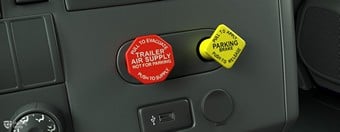Here is a free New Jersey CDL Combination practice test! This practice test, one of several we offer, will help you prepare to pass the official Commercial Driver’s License (CDL) Combination Vehicles knowledge test. You must pass this knowledge test to operate combination vehicles, such as semi-trucks and tractor-trailers.
We’re sure that you were advised to study Section 6 (Combination Vehicles) of the official New Jersey Commercial Driver License Manual (New Jersey CDL Handbook 2026) to get ready for the Combination Vehicles knowledge test. This study guide contains all the material on which you’ll be tested. Now that you’ve read it, do you think you can pass the official Combination Vehicles knowledge test? If you feel you could use more help to pass it – well, that’s what we’re here for.
Answering the questions on this Combination practice test will help reinforce what you read in the CDL manual and make the material easier to remember. The practice test is based on the official state CDL manual, just like the official knowledge test. It is up to date as of January, 2026. There are 30 multiple-choice questions and answers to assess your understanding of such topics as combination braking systems, combination driving techniques, coupling, and pre-trip inspections. However, this practice test differs from the official knowledge test in its extra features to help you learn, including a hint and an explanation of the correct answer for each question, and an automated assistant for even more help.















